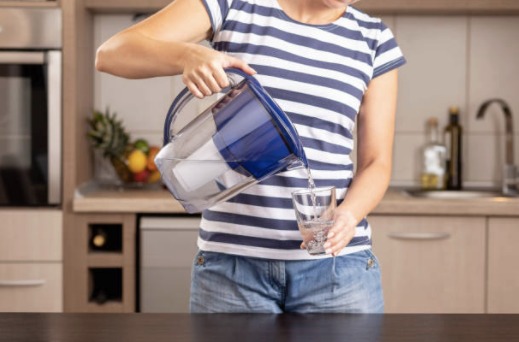What’s in your drinking water? Common contaminants (and solutions)
Tap water isn’t always clean, pure H2O
If you’re unsure as to which purification system will work best for you, you’ll need to know your water contaminants and which system works best to remove them. The most effective way to know which contaminants could be found in your water is to get a test reported in a lab.
The first step is to review different water filters – the contaminants removed, ease of use, and price points. There are a variety of harmful contaminants that can be found in tap water and each system plays a different role in removing them.
Here are some of the most common types of harmful contaminants, both biological, chemical, and radioactive:
- Arsenic
- Bacteria
- Chlorine
- Fluoride
- Lead
- Mercury
- Radium
- Calcium
- Sulfate
- Pesticides
- TDS
- Particles
Depending on the water quality your home has and the number of contaminants you want to remove, your filtration system could consist of two to six stages. We’d recommend getting a sediment filter and another type of main filtration system to guarantee the most effective process.
Sediment filters work as a first layer to cut off all the larger particles and the main filtration system will work as a second barrier, giving you all the more clean water. Both systems are easy to install, cheap, and don’t need to be replaced often.
While replacing the filters vary per usage, the most standard filters should be replaced at least once per year. Some filters (like the Reverse Osmosis) can last up to four years thanks to its self-washing tools. Some sediment filters need to be replaced more often, varying between three to eleven months, based on its usage.
Choose a water filter that meets your requirements
There are various different types of setups of basic and more advanced water filtration systems that you can install into your house. Setups come in two forms, point of entry (POE), which is ideal for the entire house, and point of use (POU), which channels specific areas like just the washing machines, bathroom, drinking spots, the kitchen, and the garage.
Additionally, make sure the water filter you’re looking into has the credentials & certifications to back up their claims. A recent article by Clean Cool Water looked at hundreds of water filters online and found that over 70% had no certifications present.
Here are a few of the most common types of different water purification system setup for your home.
Water pitcher
Water pitchers aim to provide a very basic form of water filtration with a very simple setup and no installation needed. It’s as simple as buying it and using it.
Since water pitchers have only one filter, they tend to be activated by a carbon filter. Thanks to its light design, these filters are easy to carry around and transport. Plus, they’re small enough to fit inside fridges and coolers.
Faucet Filters
Water faucet filters are designed for families that may be looking for the most basic water filtration system with a continuous flow of a pure water supply. Faucet filters are compact enough in size to attach right to your sink’s faucet, having a nifty look, and take up zero of your valuable counter space.
Once the faucet filter is installed, it’s as easy enough as turning on your tap and enjoying clean drinking and cleaning water.
Countertop water filter
Single-stage countertop water filters are ideal for people who want a basic filter but aren’t very inclined to changing the filter out too often. Countertop water filters take up more space compared to the faucet filters but allow for longer usage without needing to be replaced.
Under the sink water filter system
If you’re looking to keep your countertop space free (having enough space is important), you might want to favour a single-stage under the sink setup. By installing the filter under the sink, you’re hiding the filter system and it makes your kitchen look better. Plus, you’re getting a continuous supply of healthy and pure water.
Multi-stage purification system (under the sink)
Multi-stage purification systems have three stages (sometimes more) and are installed under your sink and out of sight. It’s one of the most widely-used water filtrations systems for home use. The most popular use of this system, specifically, is the Reverse Osmosis (RO) process, which gives a direct flow of water right out of your kitchen tap.
Gravity Drip System
The gravity drip water filter system consists of a multi-layer process that is used predominantly for outdoor and travellers.
It’s suitable for people who don’t have access to a kitchen (renters in dorm rooms) and all you need is an elevated reservoir that has a pipe coming out that feeds water direction into a drip irrigation that is controlled by a timer.
The short answer – it really depends…
In the end, it’s inevitable that there will always be some sort of contaminants in your water, regardless of whether it’s from a well or municipality. You can do your part by understanding the different types of filters and use at least a POU (point of use) process in your home. If your budget allows for it, and you want longevity, a POE (point of entry) system might be wise to filter water throughout your entire home. With POE, you’ll see a difference not only in taste but when you cook and clean as well.
We all know water is essential to the well being of humans, so you might want to choose carefully and wisely.



